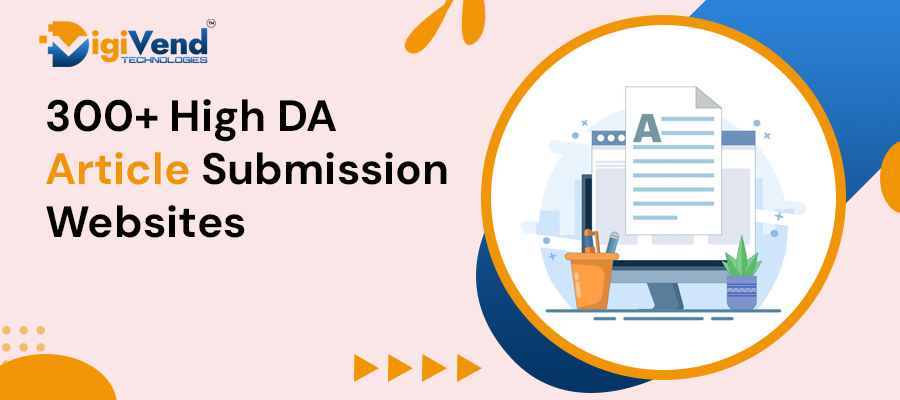With the emergence of social media and digital marketing, having a website has become a bare minimum for every business to showcase themself on the internet. Also just having a website is not mandatory, for a business to expand and grow needs a creative and attractive website, that can attract potential audiences and display the desired product and service along with features in the most convincing manner. Keeping all these elements in accordance is the duty that comes under Technical SEO.
One of the most crucial component of a successful website via digital marketing is SEO; How Google reads and understands your content and then rank it on SERPs keeping in mind the audience’s comfort. SEO comprises On-page, Off-page, and Technical SEO. While on-page and off-page SEO caters to the content and its marketing, Technical SEO deals with all the technical aspects of a website, which includes the page loading and responding time, which ultimately decides whether a viewer is going to open and read the website fully or is contributing to the increasing bounce rate.
Also Read: SEO Audit : Advanced SEO Checklist For 2025
What Is Technical SEO?
Technical SEO refers to managing all the technical aspects of a website for the best display and performance on the search engine. It includes managing the structure of the website, optimizing its performance, and handling site speed and response time. The main aim of performing technical SEO is to make the website creative and catchy in front of the viewers, it does not care about the content posted and its relevancy, it just focuses on the display and interaction part.
|
Type Of SEO |
It’s Working |
|
On-page SEO |
Optimizing the content posted on the website,in-detail keyword research, meta tags, image inclusion, and internal links. Focuses on improving the structure of the content to make it more readable |
|
Off-page SEO |
Activities outside the website are taken care of here, such as link building, and Brand mentions to increase the authority and credibility of the site. |
|
Technical SEO |
Improving the backend performance, which includes improving the site speed for loading and responding, making it mobile-friendly, and enabling HTTPS security and indexing. |
Therefore, On-Page SEO focuses on optimizing the content of a website to make it more search engine-friendly. Off-page SEO involves building authority and reputation through external factors like backlinks and social signals. Technical SEO, the nonvisible part of SEO improves the website’s backend structure and performance to help search engines crawl and index it efficiently.
Also Read: What Is Off-Page SEO? A Complete Guide
How Did Search Engines Evaluate Technical SEO?
There are multiple checkpoints on which search engines like Google examine and decide whether a website to be displayed on SERPs or not, they are mentioned below, in the following manner:
Crawlability (Can They Crawl Your Website?)
Here, search engines send robots called crawlers or spiders to your website, which will thoroughly visit it and see what pages exist.
- They look at your robots.txt file, which tells search engines which pages to visit and which ones to skip.
- They check for a sitemap, which is a map of your website that helps search engines guide all important pages.
If a search engine like Google can’t crawl your website nicely, it won’t get that which pages exist or not. So crawlability is the first thing that search engines check for.
Also Read: What Is On-Page SEO? A Complete Guide
Indexability( Can search engine save your pages in its system?)
After crawling, the next step is the indexing of your web pages, in which the search engine stores your pages in its database. Only the indexed pages are displayed in the SERP.
- They take care that any pages aren’t blocked by mistakes like no index tags, which can stop indexing.
- They also look for duplicate content. If two pages are the same, they might ignore one. To help, you can use canonical tags, which tell search engines which page is the main one.
Speed and Performance( Does your website load fast?)
Pages that load in just seconds and respond quickly are the ones that audiences prefer and Search engines like Google. Search engines measure how fast your website pages load, using tools such as PageSpeed Insights and Core Web Vitals.
Also Read: What Is Organic Traffic And How To Drive It To Your Website?
Mobile Friendliness( Does it work well on mobile devices?)
With the growing usage of mobile phones over systems for online services and shopping, most people use mobile phones to search online, and thus your site to have wider accessibility needs to work well on smaller screens too. Here Google will use Mobile-First Indexing, which means Google looks at your mobile site first instead of the desktop or system. They test things like:
- Are the buttons big enough to tap?
- Is the text readable without zooming?
- Does the layout fit the screen?
HTTPS Security( Is the site secure?)
People need to trust your website. If your site is not safe and secure, the search engine will possibly reduce its ranking on SERP.
- They see if you have an SSL certificate (the little lock in the browser bar).
- Secure websites use HTTPS instead of HTTP.
Also Read: Everything You Need to Know About Performance Marketing Services
Site structure and Navigation( Is the website structured properly?)
Search Engines want the website to be properly organized like a well-maintained library, with everything placed in the right place.
- They will check the URL, it must be clean and simple.
- Search engines will look after the internal linkings to see how pages are connected.
- They check your breadcrumbs, which help visitors and search engines understand where they are on your site.
Schema Markup ( Does it use Structured data?)
Structured data helps search engines understand your content better. It’s like giving them extra clues. It gives them extra clues.
- They look for Schema Markup. For instance, through this, you can tell Google “This page is about a product “ or “This page is a recipe.”
- If done in the correct manner, it can make your listings in Google more attractive (Like showing star ratings or images).
Also Read: Digital Marketing Strategy for 2025
Fixing Technical Issues( Are There Errors On The Site?)
Broken URLs, pages, missing content, or wrong redirects can confuse search engines and users, which ultimately is going to affect your ranking and availability on SERPs.
- They look for 404 Errors( pages not found).
- They go for checking redirects to see if they’re working correctly or not (301 permanent redirects are usually best).
- Search engines like Google check if your server is reliable or not (no 500 errors from the server crashing).
Pages Without links( Search for orphan pages?)
Orphan pages refer to those pages that are not linked from anywhere else on your site. Search engines might not find them and thus will get ignored, even if the best quality content is posted on it. Search engines follow links from your homepage or menu. If a page is not linked there it might not get crawled or indexed.
Also Read: What Is The Difference Between AEO And SEO?
Key Elements of Technical SEO
-
Website Crawlability
Crawling makes sure that search engines can access and explore the web pages of your site, which later will be saved in the database. A proper XML site map and robots.txt file guide search engine bots to reach all the right pages. These bots help in better crawling and indexing which improves your visibility and ultimately places you on top ranks.
-
Website Indexability
Indexing makes sure that your web pages are stored properly in the database of search engines. Correct meta tags, canonical tags, and proper structure of the site help search engines decide which pages to index and rank.
Also Read: What Is The Answer Engine Optimization (AEO)?
-
Mobile-Friendliness
A mobile-friendly website makes sure that users can easily navigate, read content, and interact on smartphones and tablets. Responsive and easy-to-navigate layouts, readable fonts, and touch-friendly buttons are important for both user experience and better search engine rankings.
-
Page Load Time
Page speed impacts user experience and SEO rankings. Pages that load faster reduce bounce rate and keep readers and visitors engaged for a longer time. Google’s Core Web Vitals measure the loading speed and interactional activity. Optimizing images, enabling browser caching, and reducing server response times help improve the speed of the page.
Also Read: Why Influencer Marketing Is Important For Brands?
-
Security Layers
An SSL certificate is for the safety of your website by encrypting data between the users and server.HTTPS sites are trusted by search engines like Google and thus are trusted by users, as they provide privacy and protection. Google gives ranking benefits to secure sites, otherwise flags non-HTTPS websites as “ Not Secure,” impacting credibility.
-
Schema Markup
Structure data is the key that helps search engines understand your content better. It can enable rich snippets in search results, and improve visibility and click-through rates. Implementing schema makes your pages more informative and increases their chances of ranking higher.
Also Read: SEO Audit : Advanced SEO Checklist For 2025
-
Canonicalization
Using Canonical tags helps prevent the issue of duplicate content by telling search engines which version of a page is the “main” one. Without canonicals, search engines might index duplicate versions of the same content, which will hamper the SEO value and impact the ranking too. Proper canonicalization makes sure that only the right pages get indexed and ranked effectively.
-
XML Sitemap
An XML sitemap lists all important pages on your website, helping search engines discover and crawl them efficiently. It’s like a roadmap for bots to understand the structure of your site. Sitemaps can also provide data, like the last modification dates, to help search engines prioritize crawling.
Also Read: How to Improve Brand Visibility in Organic Search?
-
Robots.txt File
The robots.txt file tells search engine crawlers which parts of your website they can or cannot visit. It helps prevent bots from accessing irrelevant or sensitive areas like admin pages. However, misconfiguring it can block important pages from being crawled and indexed, which will harm your SEO.
-
404 Errors and Redirects
404 errors occur when a page can’t be found. Too many broken pages harm user experience and crawlability. Using 301 redirects helps direct traffic from old or broken URLs to working pages. Managing errors and redirects makes sure of a smooth navigation and preserves the equity of SEO links.
Also Read: How PPC and SEO Work Together To Turn Clicks into Customers?
-
Core Web Vitals
Core Web Vitals measure key aspects of user experience:
-
- LCP (Largest Contentful Paint) for load time.
- FID (First Input Delay) for interactivity.
- CLS (Cumulative Layout Shift) for visual stability.
Google uses these metrics to rank websites, rewarding those with faster and more stable pages.
Importance Of Technical SEO In Successful Performance Of Website
Technical SEO works as the backbone of your website by improving its online display and performance. It makes sure that your site works properly so that search engines can find, understand, and show it to users in search results. Without strong technical SEO, your website might miss out on the chance to be on SERPs irrespective of the quality of your content.
-
Improves Ranking
Google favors websites that are technically sound. A site that loads quickly, works properly on mobile devices, and has no errors, ranks higher in search results. Strong technical SEO improves website structure, speed, and security which are the ultimate factors that help in better ranking.
Also Read: How To Choose The Best Google Ads For Your Business?
-
Improve User Experience
A fast mobile friendly and secure website makes visitors happy and keeps them engaged till last. Google favors websites on the basis of user experience, like how long people stay or how quickly they leave. Proper use of Technical SEO helps in improving UX, reducing bounce rates, and increasing the time one spends on a website.
-
Boost website performance
If a website takes more than 6-7 seconds to load, it can frustrate the viewer which forces them to leave the site, which directly affects rankings. Technical SEO makes sure that your site meets the standards by adjusting the Google Core Web Vitals like page speed, interactivity, and usability.
Also Read: What Are The Different Types of Websites in 2024?
-
Maximises Content Visibility
Even the best content won’t get the best ranking, if the search engine doesn’t get or access your site or webpage. Technical SEO makes sure Search engines like Google find and display your content properly on SERPs, helping you reach a wider audience.
-
Increase Organic Traffic
With better ranking more people will find your website naturally without any need for paid ads. Technical SEO increases your organic traffic, bringing in more potential customers and opportunities for growth.
Also Read: Best Website Builder for Small Businesses in 2024
-
Long-term SEO success
Technical SEO creates a solid foundational base for you, once technical aspects of your website are sorted, other SEO efforts like content and link-building become much more effective. All other techniques of on-page and off-page SEO depend on it.
Common Technical SEO Mistakes To Avoid
- Blockage of Important pages in Robots.txt: Accidentally preventing search engines from crawling and indexing important pages.
- Missing or incorrect No-index Tags: Important pages may get excluded from search results if tagged in the wrong manner.
- Slow Page Speed: Images that are not optimized properly, heavy codes, and poor server response times may slow down your site.
- Ignoring of HTTPS (SSL Certificate): Sites without HTTPS are marked as not secure and may lose rankings on SERPs.
- Poor Mobile Friendliness: Non-responsive design makes it difficult for your site to display properly on mobile devices.
- Broken Links and 404 Errors: Dead links can negatively affect user experience and crawlability,
- Missing XML Sitemap: Because of this search engines struggle to discover and crawl your pages effectively.
- Ignoring Structure Data: Missing schema can reduce the chances of getting rich snippets in search results.
- Content Duplicacy Without Canonical Tags: Search engines might end up indexing your duplicate pages, which will split the power of ranking your site.
- Poor Website Structure And Navigation: Complicated inclusion of menus and deeper hierarchies make crawling harder.
- Un-optimised URL structure: Long, unclear, and confusing URLs can impact both user experience and crawlability.
- Irregular Technical Audit: Without proper audits, small technical issues can turn into major SEO problems over time.
Also Read: How Does SEO Help The Businesses?
Conclusion
Technical SEO works as the base of a successful website. It works to make sure that your sites crawl, index, and navigate easily, which directly impacts your search engine rankings and user experience. By optimizing the speed of the website, enabling mobile friendliness, and security, and fixing technical errors, you can create a strong platform for your content and other SEO efforts to perform effectively. Timely updates and regular audits are essential to keep your site healthy and competitive. Investing in technical SEO not only improves visibility but also works to build trust with both search engines and users, driving more organic traffic and long-term sustainable success.
FAQ (Frequently Asked Questions):
-
What Is Technical SEO?
Technical SEO involves optimizing website infrastructure to help search engines crawl, index, and rank your site effectively.
-
Why Is Technical SEO Important?
It improves website crawlability, speed, security, and user experience, directly impacting search engine rankings and organic traffic.
-
What Is A Robots.txt File?
Robots.txt guides search engine crawlers on which pages or sections of your site they can or cannot access.
-
What Is An XML Sitemap?
An XML sitemap lists your website’s important pages, helping search engines discover and crawl them more efficiently.
-
What Is Mobile-First Indexing?
Google primarily uses your website’s mobile version for indexing and ranking, making mobile optimization essential for SEO success.
-
Why Is HTTPS Important For SEO?
HTTPS secures your website, builds user trust, and is a Google ranking factor, improving your site’s visibility.
- What Are Core Web Vitals?
Core Web Vitals measure page speed, interactivity, and visual stability, directly influencing user experience and search rankings.
- How Often Should You Perform Technical SEO Audits?
Conduct technical SEO audits every 3-6 months to identify and fix issues affecting your website’s performance and rankings.
 ISO 9001:2010
ISO 9001:2010 INDIA: +91 6378400775
INDIA: +91 6378400775 USA: +91 6378400775
USA: +91 6378400775








